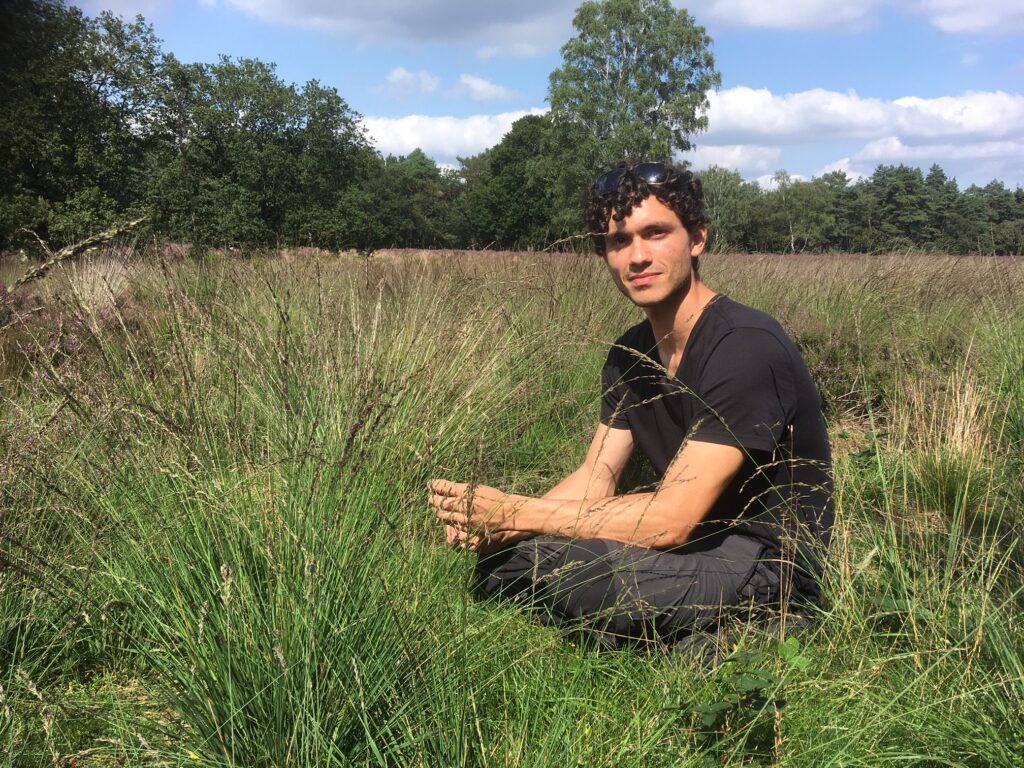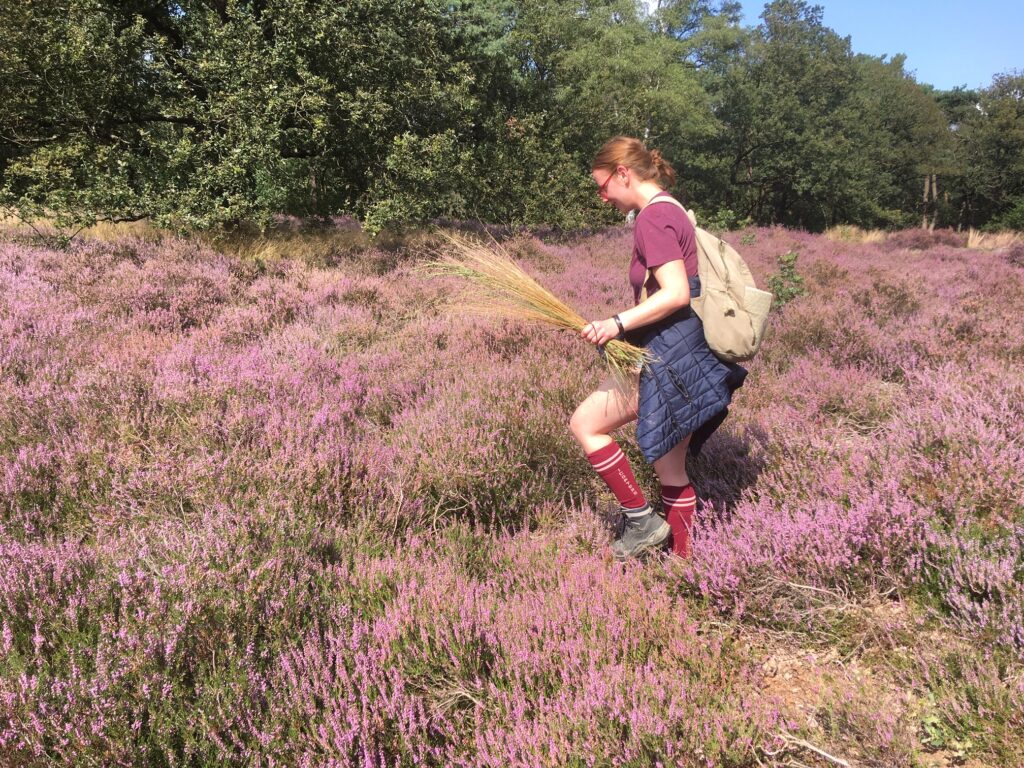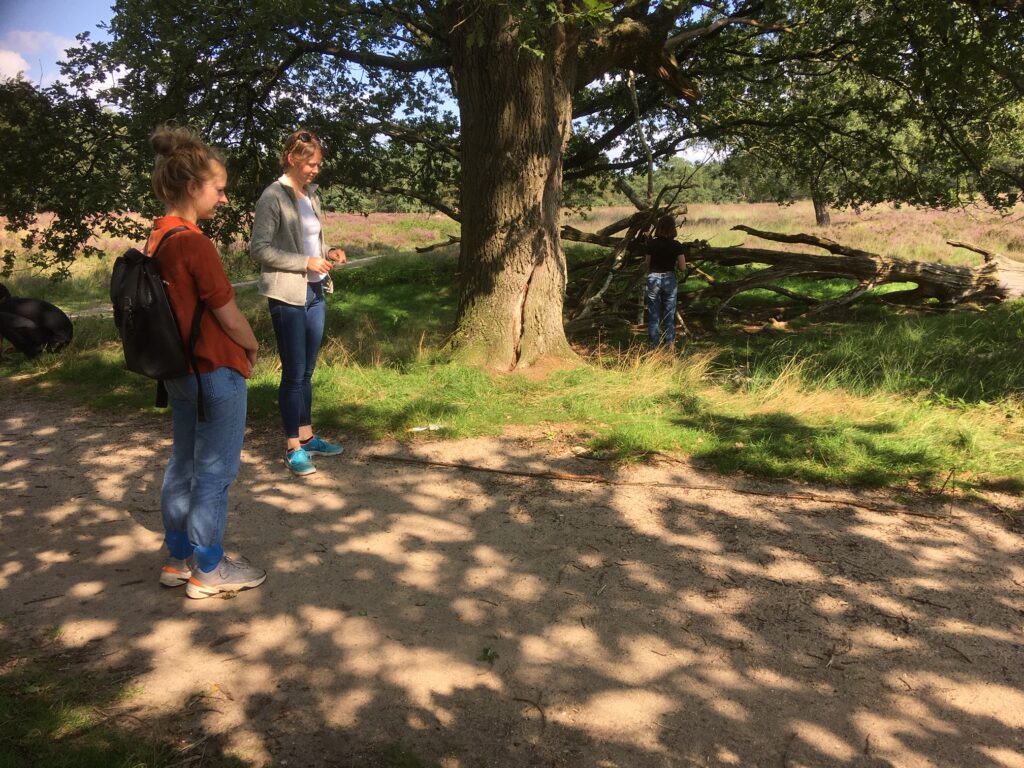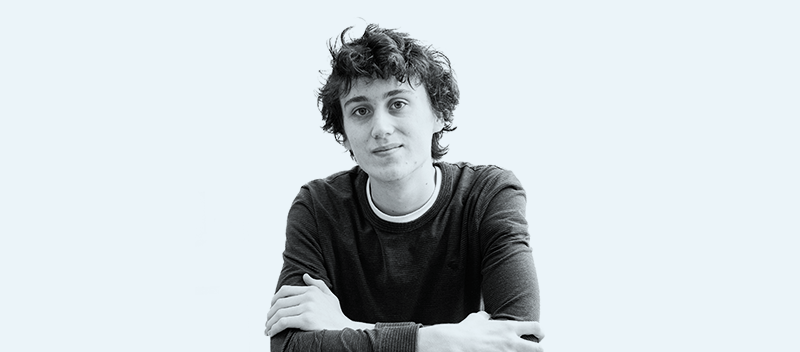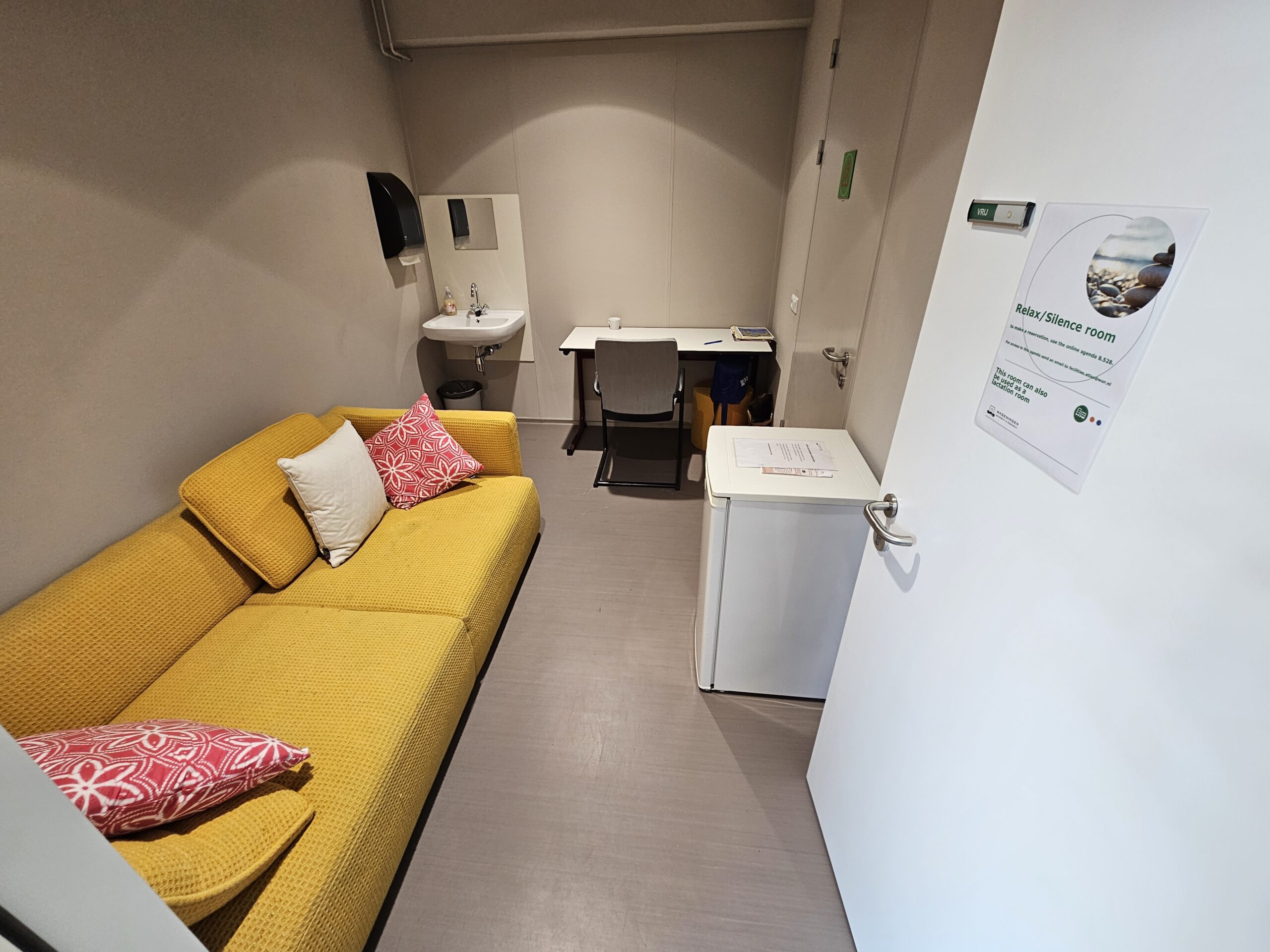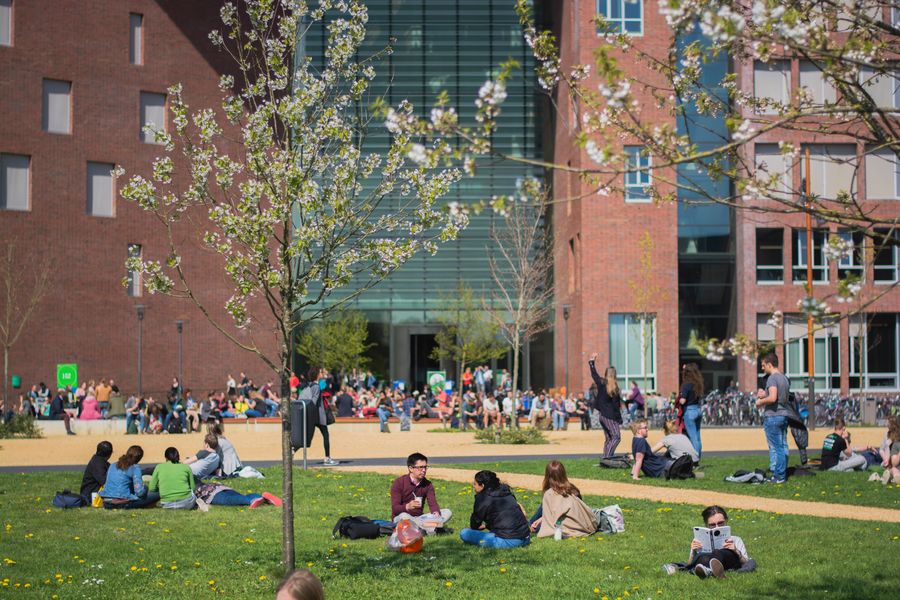During the Wild Perspectives summer course that took place for the first time this year from Monday 23 to and including Friday 27 August, students reflect on the role of humans in nature and their influence on the landscape. The course focuses on ‘seeing through different eyes.’ Resource joined one of the field trips.
Students experience different perspectives during workshops, field trips and exercises. They learn bush crafting skills to enable them to spend a night in the woods, hike through nature and work on drama, landscape design and storytelling. All of this outdoors.
The course was designed by Reineke van Tol (Forest and Nature Conservation Policy), Ignas Heitkönig (Wildlife Ecology and Conservation) and Paul Roncken (Landscape Architecture and Spatial Planning). ‘Humans have placed themselves above nature’, says Van Tol. ‘This is what we reflect on during this course. How do we, as humans, relate to nature? We tend to develop technological solutions to the issues we encounter, which place us even further apart from nature. This course teaches students how seeing the world from a non-human perspective can contribute to solving issues such as climate change and loss of biodiversity.’
‘In general, students learn from books of pdf-files’, Heitkönig adds. ‘Empirical knowledge is central to our academic culture. But there are different types of knowledge. Experiences such as these, where students reflect on their place in the world, merit more attention in the academic world.’
The heath as a lecture room
On Wednesday, the students hiked from the Parenco factory to the Heelsum valley. Along the way, they attempted to immerse themselves in the different animal species, such as the trout swimming upstream, the kingfisher and other animals. What human obstructions do they encounter, and how do these affect their lives?
‘The beauty of this course is that you don’t just use your brain to learn, but all your senses as well
Second-year Master’s student of Animal Sciences Anna Gelhausen
Once in the valley, the group sits under a tree among the blooming heath. During lunch, they discuss the walk, after which the afternoon programme starts. Students are to find a plant or animal species and design and construct an installation on the spot that is useful to them, and that may facilitate the interaction with humans without disturbing the selected species.
Grass pillows
Brenno Francioli (24, Bachelor’s student Environmental Science) from Brazil walks about a hundred meters away from the tree. He kneels down. ‘Close to the ground, you can hear the grasshoppers well, and you can observe all the insects. It is a beautiful sound.’ He decides to make some sort of pillows of grass, on which children can lay on their bellies to observe the insects.
Francioli is enthusiastic about the course. ‘This is the real world. Of course, you can never fully see from the perspective of animals, but by walking around in nature and exploring their challenges, like the trout swimming upstream, you get closer to their perspective than if you would try to answer this question from the classroom.’
Learning with your senses
Second-year masters student Animal Sciences Anna Gelhausen (27) designed a nest for grass snakes. ‘A type of igloo with an opening for the snake and an opening at the top allowing humans to observe without disturbing the animal.’ Gelhausen is inspired by the course. ‘The beauty of this course is that you don’t just use your brain to learn, but all your senses as well.’
Diede Mekkering (24) started her masters in Forest and Nature Conservation in February. Before that, she studied Liberal Arts and Sciences in Maastricht. She constructs a beetle paradise along a path, which she calls the beetle highway. ‘Next to a tree because beetles like owl manure.’
During her Bachelor, Mekkering missed being able to apply what she learned. ‘I hoped to find this in Wageningen. What I like about this course is that we are applying what we have learned in practice.’

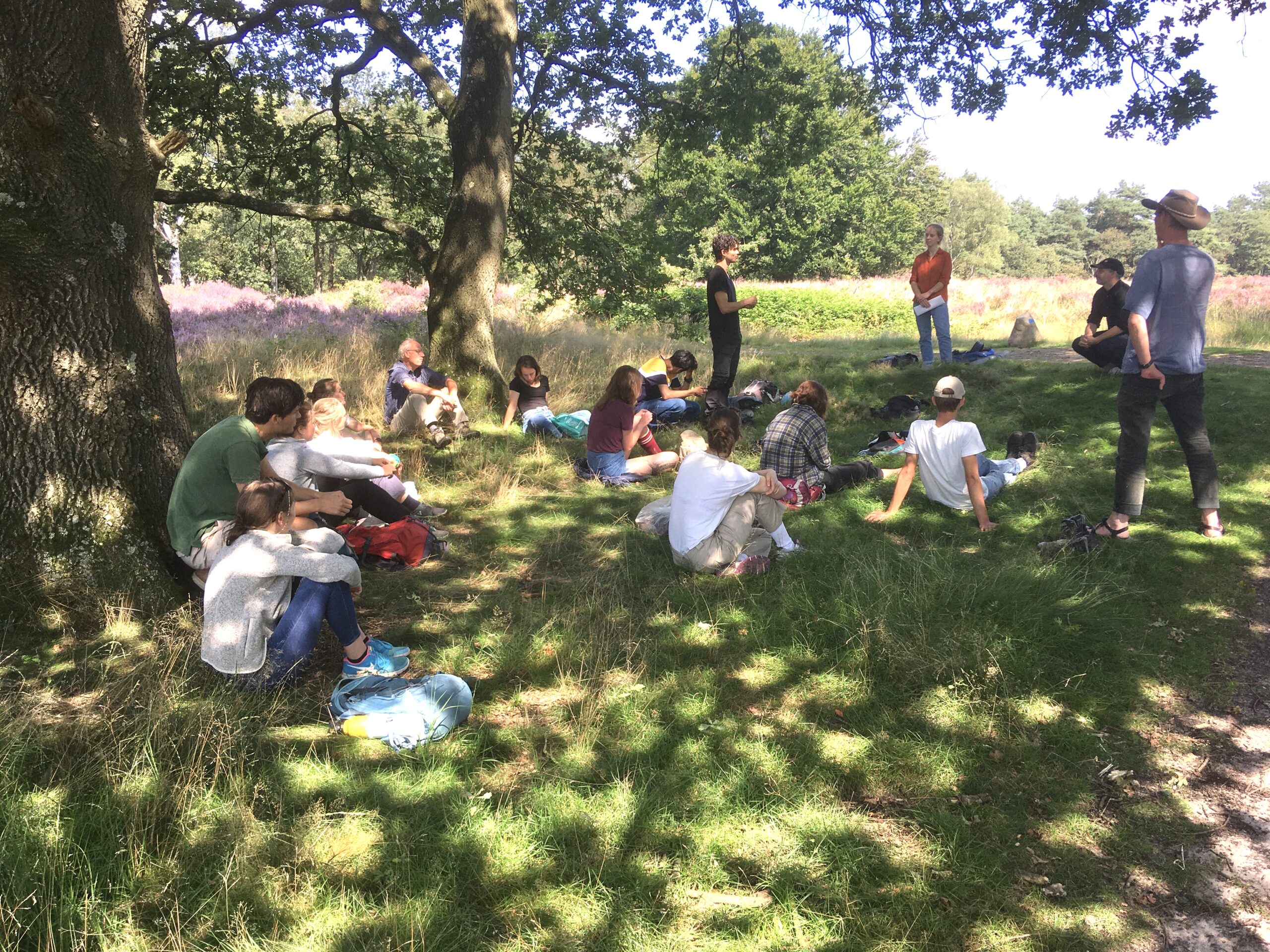 The heath as a classroom
The heath as a classroom 